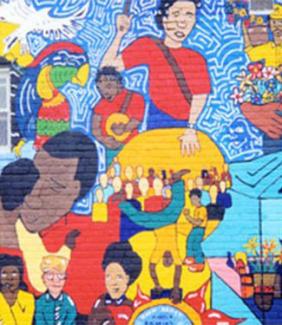Maria Jirau-Torres, Language Access Coordinator, National Sexual Violence Resource Center
As I remember my days as an advocate at a local sexual assault-domestic violence program, I realize that I truly did so much more than counseling survivors. I was the sole bilingual Latin@ advocate, which meant I was also a child advocate for Spanish speakers, answered Spanish speaking crisis hotline calls and provided medical and legal advocacy to Latin@ survivors. I learned a great deal during those years. In order to serve my community as best I could, I had to transcreate - not translate - resources and information in Spanish starting with basic concepts like safety and confidentiality. Not only did I need to use language that could be understood by the survivor, but I also needed to consider whether this was for a 1st generation or 3rd generation Spanish speaker, whether it was respectful, and whether my transcreation addressed the fears that exist for many marginalized survivors.
The traditional mainstream effort of providing resources and information to the community is usually referred to as outreach. What I did, and what everyone who works with diverse communities does, is better called reaching out. I’ve come to see reaching out as an important distinction requiring active engagement with people, taking the initiative at every opportunity, recognizing that I must be the one to climb over the hurdles to reach people, not expect them to come to me after reading a brochure.
Some time ago, I found Michael Lee’s article, “Ten Ways To Market To People From Diverse Cultures” and was inspired to see that what I had practiced and believed for years had been put into words. Some of the key points he highlights include:
- First, learn the language! Most people assume that people who originate from Mexico speak the Spanish language. Not so. While Spanish is the official language in Mexico, there are also 68 recognized indigenous languages. What happens when your community is made up of folks that speak Yucatec Maya or Nahuatl? And what if they are 1st or 3rd generation Puerto Ricans? Would you know which important elements you need to consider when reaching out to them?
- What images are you using when creating resources? Graphics such as squares or sunrises or art deco drawings are probably not going to have the same meaning for people from other cultures as they may for those in mainstream culture. You have to understand what “community” looks like to your community and then represent it. For example, some Latin@ communities use foto novelas to share information. Foto novelas use visual arts and images of Latin@s with a message. I remember growing up and seeing them used for many types of messaging, from sex education to church and religious material to product advertising. I’ve used the foto novelas concept in brochures, palm cards and other print documents.
- Are you making resources available in multiple languages that reflect the people and diversity in your community? Are the images positive and relatable? If you are not sure, you should consult an expert. Who is an expert? Any staff, board members, or volunteers who reflect the community that you are trying to reach. Nobody comes to mind? That’s your first problem.
- Build relationships. Let me be blunt: mainstream organizations often partner with agencies that most marginalized communities fear or distrust, like immigration or law enforcement. Do you want to help the community? Get to know them. Attend local functions. Go into the community. They are not likely to come to you. You might represent a threat…until you don’t. Get out and start connecting if you’re really interested in meeting the needs of ALL survivors and victims.
- Don’t use acronyms or idioms! They don’t translate. Acronyms like “FYI” or “actions speak louder than words” can be meaningless to other cultures.
I encourage you to read the entire article, but the points above are those I refer to often in training and have used regularly as an advocate. Creating culturally responsive resources and reaching out directly to your communities are small but critical pieces of the larger process of building your organization’s capacity to provide effective services beyond the traditional means – to help bring the margins to the center.
For more information see:
- How can agencies enhance access to services for Latin@s in their community?
- VAWnet’s Special Collection: Domestic Violence in Latin@ Communities
- Resources available in multiple languages for victims and advocates from the National Immigrant Women’s Advocacy Project
Image from DC Murals.














